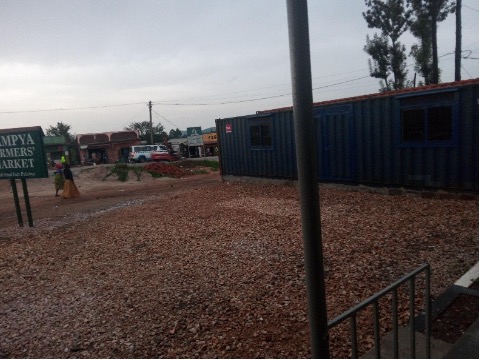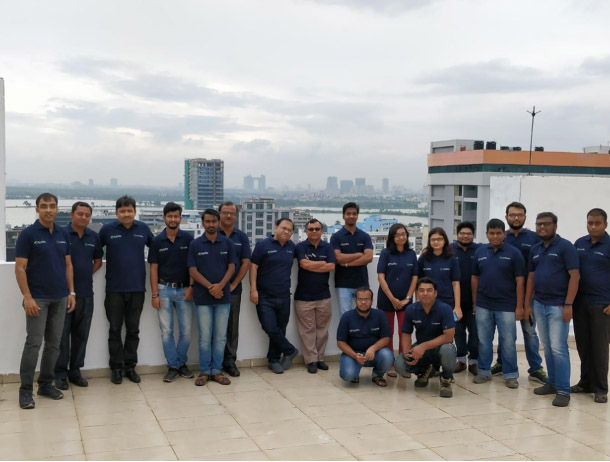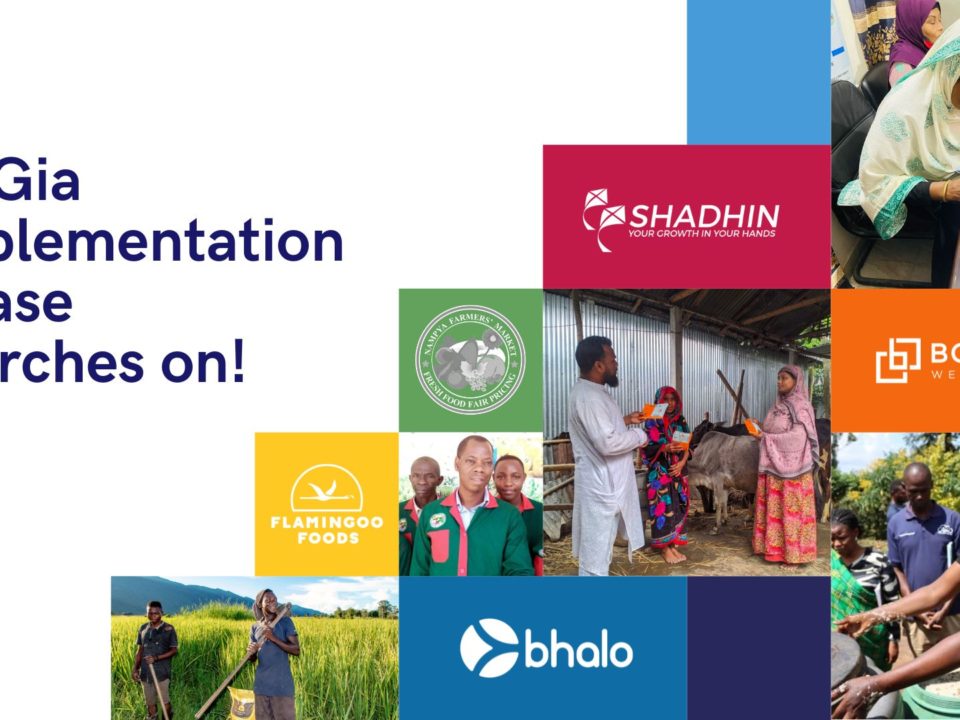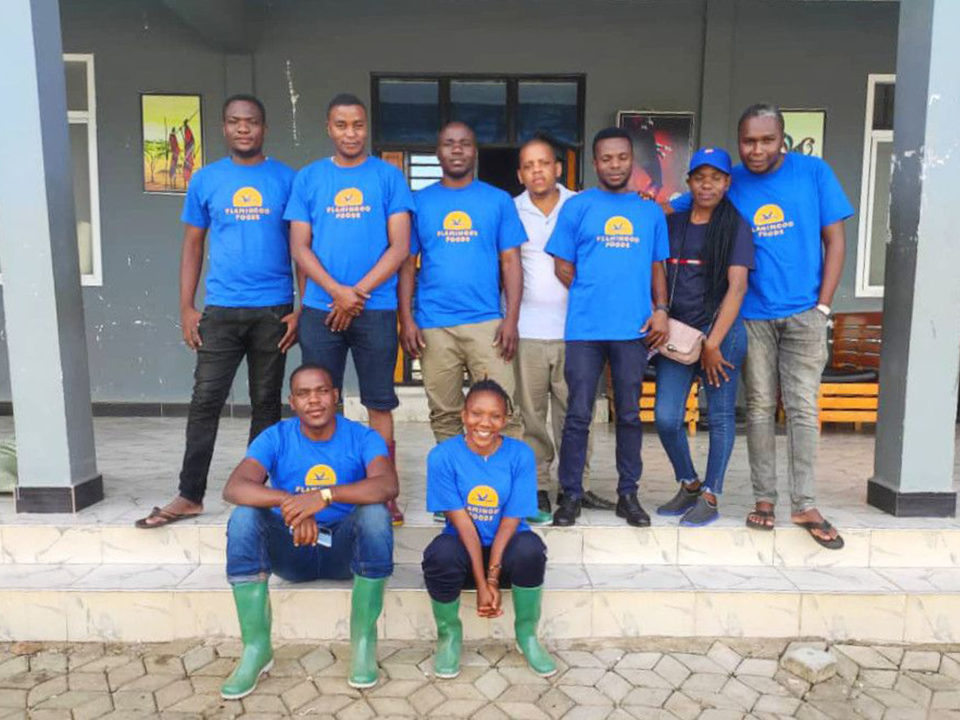Our interview with Mark Matovu, the co-founder of Nampya Farmers’ Market, revealed his and the startup’s backstory. We talked about the problems Nampya aims to solve and the struggles of farmers in Uganda


What is your origin story? How did you come up with this idea?
Born from a humble agricultural family, I was out of secondary school for three years between 2003 and 2005. Not because I wanted to but because my single mother could not raise tuition fees for my four siblings and me because of the poor pay by supply chain intermediaries for our hard-earned agricultural produce. So, my mother and I resolved that I get out of school so we could work together on the farm to help my siblings get at least elementary education. But, during my third year out of school, I felt much love for education, and I moved out to start looking for a scholarship. Fortunately, I got one from a traditional kingdom in Uganda. I was sponsored in secondary school and university, from which I graduated with a Computer Science degree in 2012.
 After university, I went back to my community and set up a small ICT center to help train the community in basic ICT skills for human capital. After two years of training, I was thrilled to launch research on how religion affects small business owners in many ways, such as access to credit and purchasing decisions. During my research, I was approached by a Dubai-based group that tasked me to research the exports of bananas from Uganda to Dubai. This research took me 4 days, and the findings were shocking!
After university, I went back to my community and set up a small ICT center to help train the community in basic ICT skills for human capital. After two years of training, I was thrilled to launch research on how religion affects small business owners in many ways, such as access to credit and purchasing decisions. During my research, I was approached by a Dubai-based group that tasked me to research the exports of bananas from Uganda to Dubai. This research took me 4 days, and the findings were shocking!
I found that it was impossible to export bananas because the price of a bunch in Kampala was the same as that in Dubai. Plenty in Dubai had come from Kampala. At this time, I remembered the three years I was out of school and looked at the value chain in a very complex way. Not from the export side of things but from the local consumption view, realizing a huge problem that needs to be solved. Given my background in ICT, I felt I could help solve this problem, hence the idea that gave birth to Nampya Farmers Market in 2017.
Nampya Farmers’ Market was born to solve the problem of fragmentation in the produce market to reduce food waste and inflation. We co-founded it with Dianah Kaseeta, and we’re still in it together. In 2018, Nampya received a grant of $2,000 from RUFORUM (Regional Universities Forum for Capacity Development in Agriculture), a grant of $5000 from Tony Elumelu Foundation in Nigeria) in 2019 and $13500 by SDC (Swiss Development Corporation) in 2020.
 What were some of the difficulties you have seen farmers face that influenced you to found Nampya?
What were some of the difficulties you have seen farmers face that influenced you to found Nampya?
In Uganda, over 70% of the country’s population is in rural areas and employed in agriculture. They remain poverty-stricken with extremely low standards due to the lack of access to constant buyers of their produce, poor pricing of their hard-earned produce by intermediaries, and lack of incentives for increased food production.
According to the UN Environment Programme, 500 million small farms provide up to 80% of food consumed in the developing world. However, they receive a tiny share of the value generated by their production. Instead, most of it’s captured by intermediaries in the supply chain between them and the final consumer. These last years have seen increasing consumer demand for fresh and ethical products. There’s a huge opportunity for developing transparent and fair distribution models which can put back farmers’ livelihoods at the center of the equation. Cutting out intermediaries and enabling more direct access to the market for smallholder farmers can directly increase economic security for rural communities to assure food production for local and global markets, which is what Nampya Farmers Market is doing by connecting smallholder farmers to markets they could never attain on their own. In the process, we cut out several intermediaries and redistribute this value to both the consumer and the producer. We also provide additional services with training modules on logistics. The retailer’s order of outstandingly fresh produce is delivered with the story of the farmer’s region, so they know exactly where food has come from.
There are 17 Sustainable Development Goals, which are your main focuses?
We contribute to the Goals of Zero Hunger, Sustainable cities and communities, Responsible consumption and production, Gender Equity and Life on land.
 What kind of impact do you think Nampya has had on people?
What kind of impact do you think Nampya has had on people?
The emergent agricultural economy in Africa has the potential to contribute to the growth of small-holding farmers and the reduction of unemployment, poverty, and inequalities. The potential of the emerging farmers to participate in this sector is untapped. Most of the products produced by the farmers are sold to informal markets with a low market value, primarily because the distance output market is an important factor.
Long distances to the market can discourage farmers who want to commercialize. All the remunerative markets are located far away from the localities of the farmers. This implies that farmers must travel long distances to traditional markets on gravel roads with their commodities loaded on poor transportation, poor infrastructure, and a lack of transportation infrastructure affects produce quality. Thus, causing the farmers’ produce to be uneconomical or lose quality. Meaning that Nampya, through technology, is changing the food distribution landscape, enabling over 2000 farmers to market, and 310 retailers and approximately 6000 households can access the highest quality produce. Farmers, retailers, and consumers benefit from the next-day delivery service value offering.
With our Mobile Ordering Solution, Nampya is opening markets to many farmers that would not necessarily have access to markets and cannot scale as a result. The agricultural value chain process is now easily navigated and used by Nampya users. While their product range seems very limited now, I think they will improve and have a more extensive range in time.
Scope for Gendered impact at scale:
Women constitute 83% of informal greengrocers in Uganda in the age of 22 to 39, and 80% of farmers in Uganda of an average age of 60. Currently working 2040 farmers and 310 food retailers, by delivering more money in their hands, in addition to the convenience of time, the women served by Nampya Farmers Market have an opportunity to create a better livelihood for themselves and their families.
What were some of the challenges you have faced, and how did you overcome them?
The high intensity of capital required is the biggest challenge as potential investors still want us to grow more in traction first. Local capital is extremely expensive as well. However, as we continue to grow organically through retained earnings, we will also continue to search for low-cost financing like impact grants, mezzanine financing and or equity.
Why did you apply for the SDG Impact Accelerator Digital Agriculture program funded by the Turkish Government and run through the partnership of the Ministry of Foreign Affairs of the Republic of Turkey, UNDP and UN Technology Bank?
Small and growing businesses (SGBs) like Nampya Farmers’ Market are global engines of shared prosperity: they drive growth, promote sustainability, and support equity around the world. However, unlike many medium-sized companies, SGBs often lack access to financial and knowledge resources required for further growth.
Furthermore, as another report, “Education for the 22nd Century,” points out that there are gaps consisting of soft skills such as determination and decision-making, communication skills, leadership and management, entrepreneurial and critical thinking, and the ability to work in a team. So, through the SDGia program, I wanted to come out of it with a strong business growth solution for Nampya Farmers Market to result in more positive business outcomes.
My hopes and expectations included improving my own business and leadership skills as a leader and entrepreneur. I expected the program to be inspiring and highly engaging, with learning programs and a strong emphasis on networking and peer support.
What are the reactions of the beneficiaries as you go along?
6 months ago, in a recent survey done on 100 greengrocers, all clients were found to be happy with Nampya Farmers Market because of the quality food we deliver to their doorstep at the right price. They have no problem with the ordering experience. However, their two significant calls to Nampya are improving the reliability and punctuality of deliveries and increasing the product catalog to offer more product choices.



